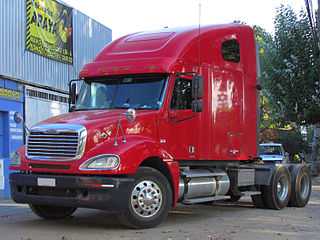
A semi-tractor-trailer truck, also known as simply a semi-trailer truck, semi-tractor truck, semi-tractor-trailer or tractor-trailer truck, is the combination of a tractor unit and one or more semi-trailers to carry freight. A semi-trailer attaches to the tractor with a type of hitch called a fifth-wheel.

A carbon footprint is the total greenhouse gas (GHG) emissions caused by an individual, event, organization, service, place or product, expressed as carbon dioxide equivalent (CO2e). Greenhouse gases, including the carbon-containing gases carbon dioxide and methane, can be emitted through the burning of fossil fuels, land clearance and the production and consumption of food, manufactured goods, materials, wood, roads, buildings, transportation and other services.

Pollution prevention (P2) is a strategy for reducing the amount of waste created and released into the environment, particularly by industrial facilities, agriculture, or consumers. Many large corporations view P2 as a method of improving the efficiency and profitability of production processes by waste reduction and technology advancements. Legislative bodies have enacted P2 measures, such as the Pollution Prevention Act of 1990 and the Clean Air Act Amendments of 1990 by the United States Congress.

The fuel economy of an automobile relates distance traveled by a vehicle and the amount of fuel consumed. Consumption can be expressed in terms of volume of fuel to travel a distance, or the distance travelled per unit volume of fuel consumed. Since fuel consumption of vehicles is a significant factor in air pollution, and since importation of motor fuel can be a large part of a nation's foreign trade, many countries impose requirements for fuel economy. Different methods are used to approximate the actual performance of the vehicle. The energy in fuel is required to overcome various losses encountered while propelling the vehicle, and in providing power to vehicle systems such as ignition or air conditioning. Various strategies can be employed to reduce losses at each of the conversions between the chemical energy in the fuel and the kinetic energy of the vehicle. Driver behavior can affect fuel economy; maneuvers such as sudden acceleration and heavy braking waste energy.
Various energy conservation measures are taken in the United Kingdom.
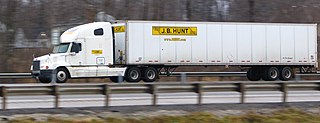
J.B. Hunt Transport Services, Inc. is an American transportation and logistics company based in Lowell, Arkansas. It was founded by Johnnie Bryan Hunt and Johnelle Hunt in Arkansas on August 10, 1961. By 1983, J.B. Hunt had grown into the 80th largest trucking firm in the U.S. and earned $623.47 million in revenue. At that time J.B. Hunt was operating 550 tractors, 1,049 trailers, and had roughly 1,050 employees. J.B. Hunt primarily operates large semi-trailer trucks and provides transportation services throughout the continental U.S., Canada and Mexico. The company currently employs over 24,000 and operates more than 12,000 trucks. The company's fleet consists of over 100,000 trailers and containers.
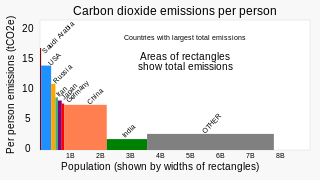
The United States produced 6.6 billion metric tons of carbon dioxide equivalent greenhouse gas (GHG) emissions in 2019, the second largest in the world after greenhouse gas emissions by China and among the countries with the highest greenhouse gas emissions per person. In 2019 China is estimated to have emitted 27% of world GHG, followed by the United States with 11%, then India with 6.6%. In total the United States has emitted a quarter of world GHG, more than any other country. Annual emissions are over 15 tonnes per person and, amongst the top eight emitters, is the highest country by greenhouse gas emissions per person. Because coal-fired power stations are gradually shutting down, in the 2010s emissions from electricity generation fell to second place behind transportation which is now the largest single source. In 2019, 29% of the GHG emissions of the United States were from transportation, 25% from electricity, 23% from industry, 13% from commercial and residential buildings and 10% from agriculture. These greenhouse gas emissions are contributing to climate change in the United States as well as worldwide.

Idle reduction describes technologies and practices that minimize the amount of time drivers idle their engines. Avoiding idling time has a multitude of benefits including: savings in fuel and maintenance costs, extending vehicle life, and reducing damaging emissions. An idling engine consumes only enough power to keep itself and its accessories running, therefore, producing no usable power to the drive train.
Trailer Bridge, Inc. is a freight service company headquartered in Jacksonville, Florida. They offer international and domestic shipping with primary international calls to San Juan, Puerto Rico and Puerto Plata, Dominican Republic. It is one of the few companies offering 53-foot containers, which offer up to 40% more cubic capacity than other container sizes.
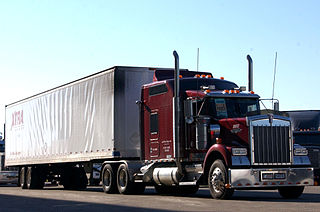
The trucking industry serves the American economy by transporting large quantities of raw materials, works in process, and finished goods over land—typically from manufacturing plants to retail distribution centers. Trucks are also used in the construction industry, two of which require dump trucks and portable concrete mixers to move the large amounts of rocks, dirt, concrete, and other building materials used in construction. Trucks in America are responsible for the majority of freight movement over land and are tools in the manufacturing, transportation, and warehousing industries.
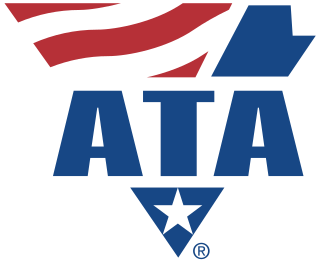
The American Trucking Associations (ATA), founded in 1933, is the largest national trade association for the trucking industry. ATA represents more than 37,000 members covering every type of motor carrier in the United States through a federation of other trucking groups, industry-related conferences, and its 50 affiliated state trucking associations. Former Governor of Kansas Bill Graves was replaced by Chris Spear as the ATA's President and CEO in July 2016.

Braun's Express, Inc. is a privately owned and operated American freight company serving the Northeast, Mid-Atlantic, and Midwest United States. Braun's operates eight terminals and specializes in supply-chain management for carpeting and flooring products, but also offers general less than truckload (LTL) shipping.
The Diesel Emissions Reduction Act, or DERA, is a part of the Energy Policy Act of 2005. The law appropriated funds to federal and state loan programs to either rebuild diesel-powered vehicle engines to more stringent emission standards or install emission reduction systems, notify affected parties, and share the technological information with countries that have poor air quality standards.

The environmental effects of transport is significant because transport is a major user of energy, and burns most of the world's petroleum. This creates air pollution, including nitrous oxides and particulates, and is a significant contributor to global warming through emission of carbon dioxide. Within the transport sector, road transport is the largest contributor to global warming.
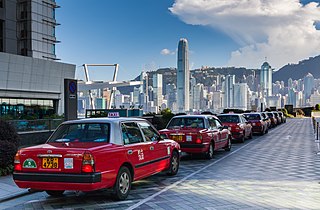
Idling refers to running a vehicle's engine when the vehicle is not in motion. This commonly occurs when drivers are stopped at a red light, waiting while parked outside a business or residence, or otherwise stationary with the engine running. When idling, the engine runs without any loads except the engine accessories.
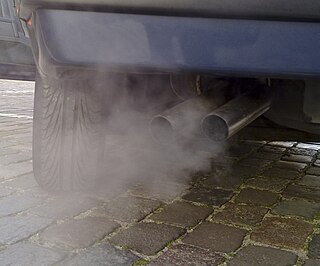
Mobile source air pollution includes any air pollution emitted by motor vehicles, airplanes, locomotives, and other engines and equipment that can be moved from one location to another. Many of these pollutants contribute to environmental degradation and have negative effects on human health. To prevent unnecessary damage to human health and the environment, environmental regulatory agencies such as the U.S. Environmental Protection Agency have established policies to minimize air pollution from mobile sources. Similar agencies exist at the state level. Due to the large number of mobile sources of air pollution, and their ability to move from one location to another, mobile sources are regulated differently from stationary sources, such as power plants. Instead of monitoring individual emitters, such as an individual vehicle, mobile sources are often regulated more broadly through design and fuel standards. Examples of this include corporate average fuel economy standards and laws that ban leaded gasoline in the United States. The increase in the number of motor vehicles driven in the U.S. has made efforts to limit mobile source pollution challenging. As a result, there have been a number of different regulatory instruments implemented to reach the desired emissions goals.
Margo T. Oge is an American engineer and environmental regulator who served as the director of the Environmental Protection Agency's Office of Radiation and Indoor Air from 1990 to 1994 and director of the Office of Transportation and Air Quality from 1994 to 2012. Beginning in 2009, Oge lead the EPA team that authored the 2010-2016 and the 2017-2025 Light-Duty Vehicle Greenhouse Gas Emissions Standards. By 2025, these rules require automakers to halve the greenhouse gas emissions of cars and light duty trucks while doubling fuel economy. These rules were the US federal government's first regulatory actions to reduce greenhouse gases.
California has taken legislative steps in the hope of mitigating the risks of potential effects of climate change in California by incentives and plans for clean cars, renewable energy, and pollution controls on industry.
The freight technology sector, also known as FreightTech, refers to software companies and technologies which assist in supply chain management and the movement of freight. In the five years following 2014, investment in FreightTech companies grew from $118 million to $3 billion per year.
Semi-trailer aerodynamic devices are devices affixed to semi-trailers, for the purpose of reducing aerodynamic drag caused by air turbulence. The two major types of device in use are trailer skirts, affixed to the underside of trailers, and trailer tails, affixed to the rear. Several such devices have been recognized by the U.S. Environmental Protection Agency's SmartWay Transport Partnership, making them eligible for funding under the Diesel Emissions Reduction Act.











